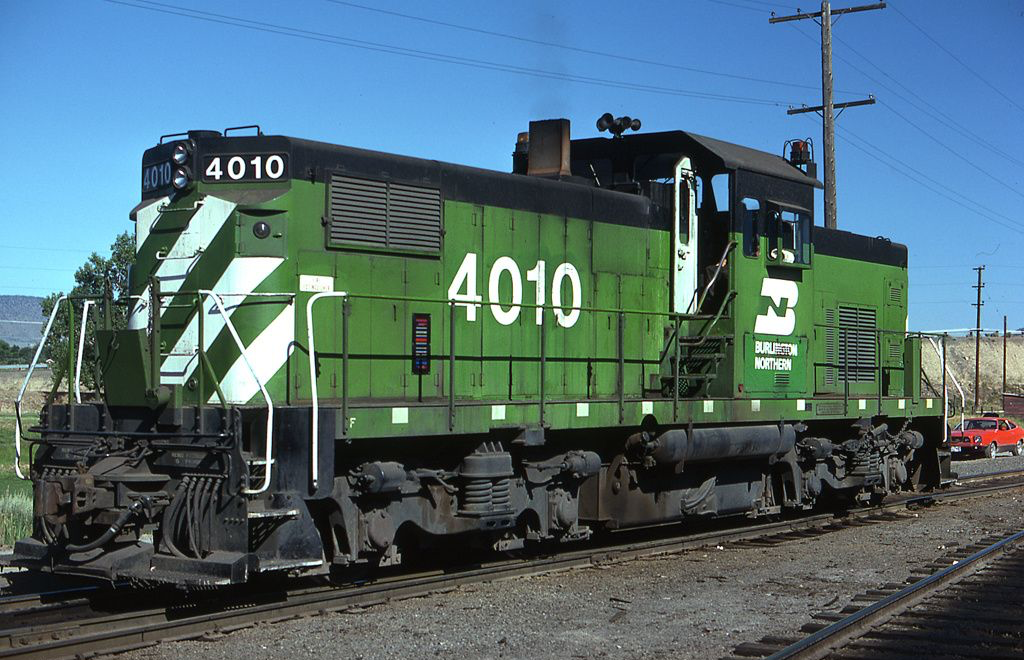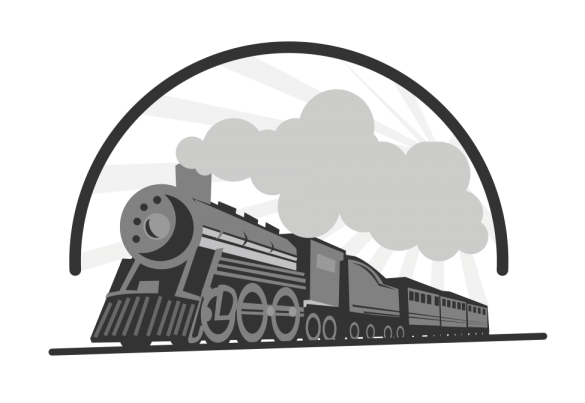THE BURLINGTON NORTHERN RAILROAD COMMENCED OPERATING ON MARCH 2, 1970. ON THAT DAY, IT BECAME THE LARGEST RAILROAD IN THE UNITED STATES. WITH A NETWORK COMPRISING 26,000 MILES (NOT INCLUDING SUBSIDIARIES COLORADO & SOUTHERN AND FORT WORTH & DENVER) IT ECLIPSED THE ENORMOUS PENN CENTRAL TRANSPORTATION COMPANY.

The Burlington Northern was an evolution of multiple railroads, each operating in various geographic segments of what would become America’s largest transportation company. In 1893, James Hill finished building the transcontinental Great Northern Railway (GN) between the Puget Sound and St. Paul/Minneapolis. Just five years earlier, the Northern Pacific Railway (NP), had accomplished the same thing five years earlier.
Unconcerned with the competition, Hill was a cunning and effective railroader who understood the challenges of moving goods throughout the Pacific Northwest. When NP entered receivership on August 15, 1893, following that year’s financial panic, he gained a considerable stake in the company.
In 1901, the Empire Builder also grabbed the Chicago, Burlington & Quincy (CB&Q), which provided him with a direct route into Chicago. It was at this time that a fight broke out with another noted tycoon, Edward Harriman, who wanted control of the CB&Q. Harriman purchased a substantial stake in Northern Pacific.

The Northern Pacific Corner.
On May 3, 1901 Harriman established the “Northern Pacific Corner” and for a short time accomplished his objective. Hill quickly countered by forming the Northern Securities Company which effectively placed GN, NP, and Burlington under common control. This was the first attempt to merge the railroads but proved short-lived. A Supreme Court order in 1904 broke up Northern Securities and it was forced to divest control of all three entities. However, by then, the battle was already over as Harriman and had sold his stock in NP.
After Hill’s death in 1917 another merger was attempted during the 1920’s but was blocked by the ICC. The discussion for merging was not renewed until after World War II when many railroads contemplated mergers to combat competition from trucks and air freight. While the industry remained heavily regulated, the ICC realized its monopolistic nature had long since passed. As early as the 1920’s the idea of creating three or four major eastern trunk lines was considered but later shelved when the stock market crashed in 1929. The process that eventually created the Burlington Northern began discretely in 1955 when the CEOs of NP and GN began informal discussions on some type of collaboration.

Several years into these discussions, several studies was conducted resulting in a formal application with the Interstate Commerce Commission on February 17, 1961. The merger would officially bring together the Northern Pacific, Great Northern, and Chicago, Burlington & Quincy into a new conglomerate. It would comprise a network of 24,500 miles and lease the Spokane, Portland & Seattle for a period of 10 years before absorbing it into the parent company as well.
As is expected with such large mergers and acquisitions, the process moved at a snail’s pace, but on March 31, 1966 the agency surprisingly voted against the merger in a 6-5 decision. The three railroads continued pressing for the union with even more emphasis on the need for the properties to survive together, or fail independently.
An important strategic victory was achieved when an agreement was reached with the Chicago, Milwaukee, St. Paul & Pacific (the “Milwaukee Road”) that stipulated their only transcontinental competitor would be granted eleven new western gateways. This strategic opportunity garnered the Milwaukee bountiful new sources of interchange business, particularly with the Southern Pacific at Portland, Oregon.
As a result of this clever maneuver, the ICC reopened hearings on January 4, 1967. Later that year, on November 30th, the merger was approved by an 8-2 vote. As the merger moved forward the new railroad’s name became the Burlington Northern, Inc. (BNI) in April of 1968. Finally, all four systems became one at 12:01 AM on March 2, 1970.

